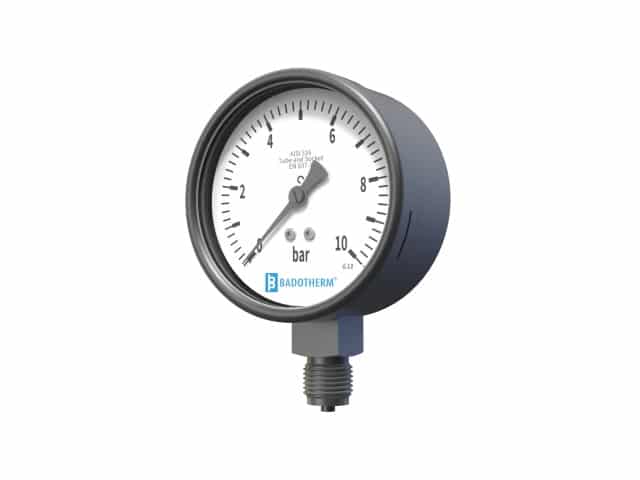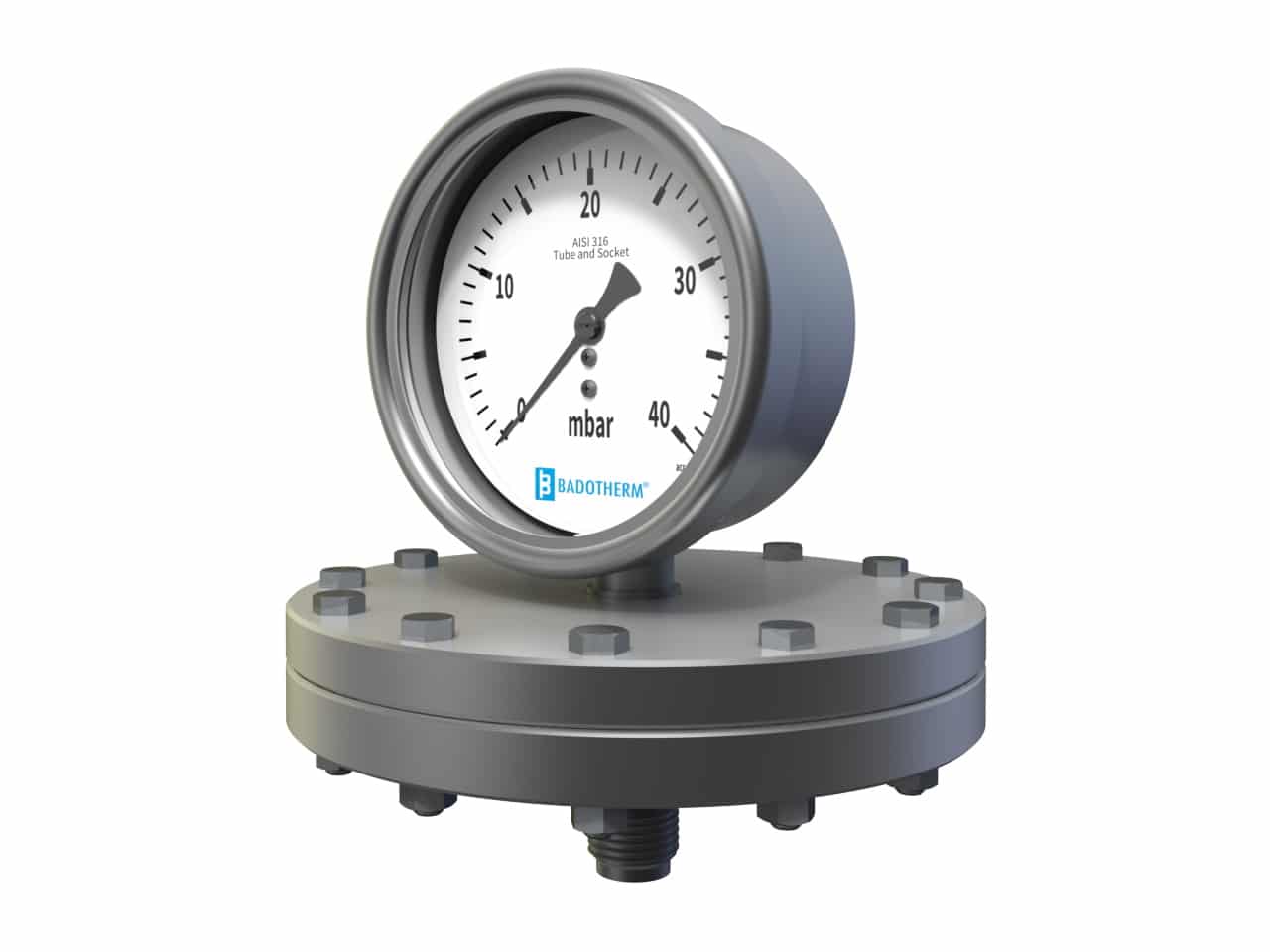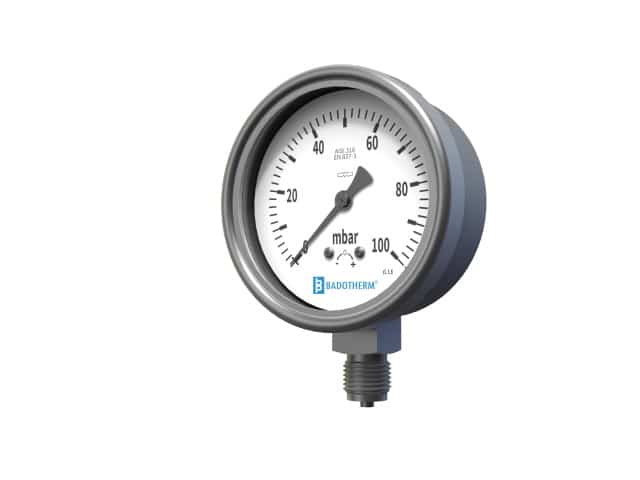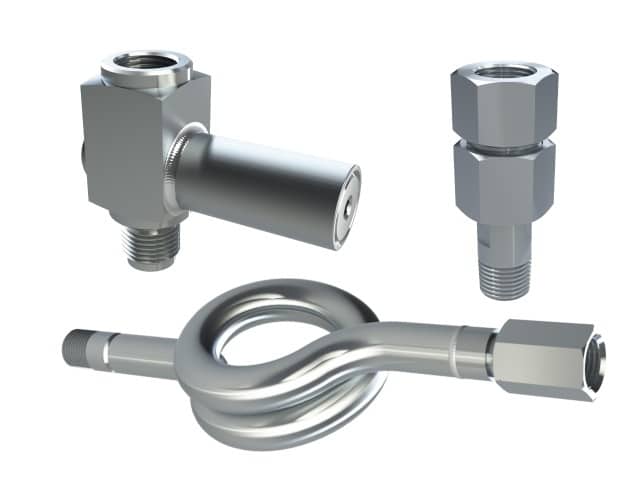
Pressure gauges
The stainless steel pressure gauge is a product of high quality. The stainless steel pressure systems are all provided with seamless drawn tube which reduces the chance of tube rupture. All Pressure gauges have the connection welded into the case and is produced according to the international standard EN837 and the PED.
The pressure gauges can be supplied with material certificates according EN10204 3.1, with NACE MR01-75 (ISO-15156) compliance and/ or calibration certificates. Our pressure gauges are also suitable to be supplied in explosive atmospheres and can be supplied with ATEX 114 compliance certification.
The most safe stainless steel pressure gauge is the solid front type with baffle wall and blow out protection (BDT20).







